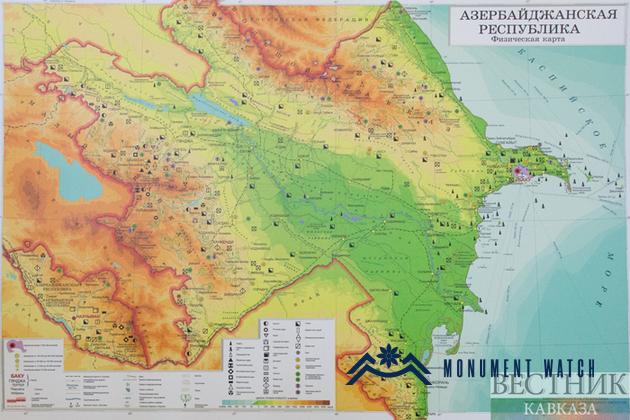Google May Remove the Armenian Toponyms of Artsakh from its Maps at request of Azerbaijan
On January 11, an article was published on the “Vestnik Kavkaza” news portal where, in particular, it was noted that, according to the Chairman of the Board of the Azerbaijan Space Agency “Azercosmos”, Sameddin Asadov, Google may remove the “Azerbaijani toponyms” written in Armenian from its maps. He also expressed confidence that the Armenian names of "Azerbaijani cities and villages" could also be completely removed from Google Map in future.
Another news portal, Haqqin.az, notes that the Electronic Security Center under the Ministry of Digital Development and Transport of Azerbaijan is negotiating with Google to display the names of cities, villages and communities of Artsakh on the maps of the company's search engine in Azerbaijani.
According to Asadov, as a result of the mentioned cooperation, a number of toponyms have already been changed and presented on the international geographical electronic map under Azerbaijani names. The Azerbaijan Cybersecurity Center, furthermore, is also in close contact with Google, and as a result of their mutual agreement, they have already achieved success. Asadov stressed that the addition of new Azerbaijani names to Google Maps was carried out due to their efforts.
It should be added that official Baku has always kept this issue on the agenda. As Foreign Ministry spokeswoman Leyla Abdullayeva stated in December 2021, the Ministry of Foreign Affairs of Azerbaijan, through official diplomatic representatives, turned to Google with a request to reject the Armenian names of the territories of Karabakh under the control of Azerbaijan, presenting the “official” Azerbaijani list of geographical names of those.
Already in January 2022, the Office of the Human Rights Defender of the Republic of Artsakh reported that the Human Rights Ombudsman of Artsakh Gegham Stepanyan sent a letter to Google urging not to remove Armenian geographical names from digital maps, to ignore the Azerbaijani provocations and their unreasonable demands, and to refrain from removing the Armenian toponyms of Artsakh from the digital maps.
The Ombudsman noted that Azerbaijan's attempt to create the desired reality on the maps is a manifestation of its long-standing policy of depriving the people of Artsakh of their homeland and denying the Armenian identity of Artsakh. In his appeal, the Ombudsman also presented the norms of international law that secure the rights of peoples to freely use and preserve their toponyms, to inherit these from generation to generation.
Notice, that at the moment the names of cities and regions of Artsakh, which are under the control of Azerbaijan, are mentioned in the Google Maps application both in the Azerbaijani and Armenian versions.
Our response
Cultural genocide does not refer only to the physical extermination, but also to distortion and falsification of history and religious affiliation, ignorance of facts, memory erasure, and creation of false cultural or religious practices. Azerbaijan's demand for replacing Armenian toponyms with Azerbaijani ones is another case of misappropriation of cultural heritage that destroys the intangible valuesof the people of Artsakh.
International law does not consider toponyms and geographical names to be the property of states, but the intangible heritage of peoples and communities. According to Article 2 of the Convention for the Safeguarding of the Intangible Cultural Heritage, “intangible cultural heritage” means the practices, representations, expressions, knowledge, skills – as well as the instruments, objects, artifacts, and cultural spaces associated therewith – that communities, groups and, in some cases, individuals recognize as part of their cultural heritage”. And Articles 16-24 call for the protection of such heritage.
According to the 3rd paragraph of the 9th article of the second Protocol (1999), supplementing the 1954 Convention "On the protection of cultural heritage in the event of armed conflict", any alteration of cultural property, the purpose of which is the destruction or concealment of cultural, historical or scientific evidence, is prohibited.
According to the UNESCO Convention for the Protection of the Intangible Cultural Heritage, the protection of cultural heritage implies a guarantee of ensuring the viability of the heritage. To protect the heritage (together with the community) means to ensure its inviolability and integrity, significance, and uniqueness. These principles follow the UNESCO cultural heritage convention and other documents.
The general provisions of UNESCO and ICOMOS, as well as a number of other documents relating to the protection and preservation of cultural heritage, are prohibiting any external or internal changes of forms, components, functions of the Cultural object, that can contradict the World main principles of identity, integrity, cultural value and uniqueness of the Heritage site.
The Nara Document on the Authenticity of Cultural Heritage, adopted in 1994 in Japan, notes that if a cultural property is in the event of armed conflict, it is necessary to recognize its legitimacy.
